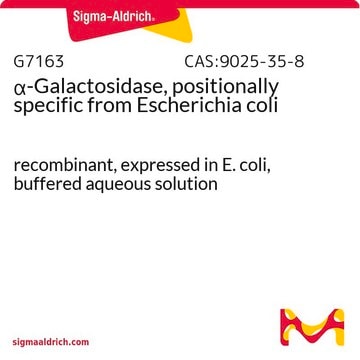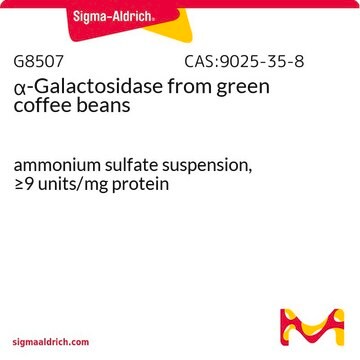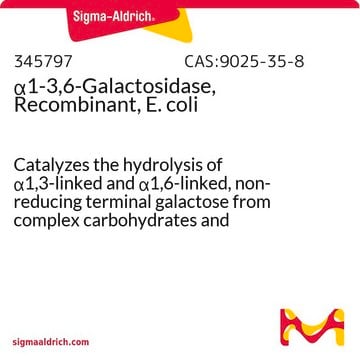G7673
α-Galactosidase I, Alkaline from Cucumis melo
Synonym(s):
α-D-Galactoside Galactohydrolase, Melibiase
About This Item
Recommended Products
recombinant
expressed in E. coli
Assay
≥85% (SDS-PAGE)
form
lyophilized solid
specific activity
≥20 units/mg protein
mol wt
apparent mol wt ~84 kDa by SDS-PAGE
shipped in
wet ice
storage temp.
−20°C
General description
Application
Biochem/physiol Actions
Physical properties
Unit Definition
Physical form
Signal Word
Warning
Hazard Statements
Precautionary Statements
Hazard Classifications
Eye Irrit. 2 - Skin Irrit. 2 - STOT SE 3
Target Organs
Respiratory system
Storage Class Code
11 - Combustible Solids
WGK
WGK 3
Flash Point(F)
Not applicable
Flash Point(C)
Not applicable
Choose from one of the most recent versions:
Certificates of Analysis (COA)
Don't see the Right Version?
If you require a particular version, you can look up a specific certificate by the Lot or Batch number.
Already Own This Product?
Find documentation for the products that you have recently purchased in the Document Library.
Active Filters
Our team of scientists has experience in all areas of research including Life Science, Material Science, Chemical Synthesis, Chromatography, Analytical and many others.
Contact Technical Service








